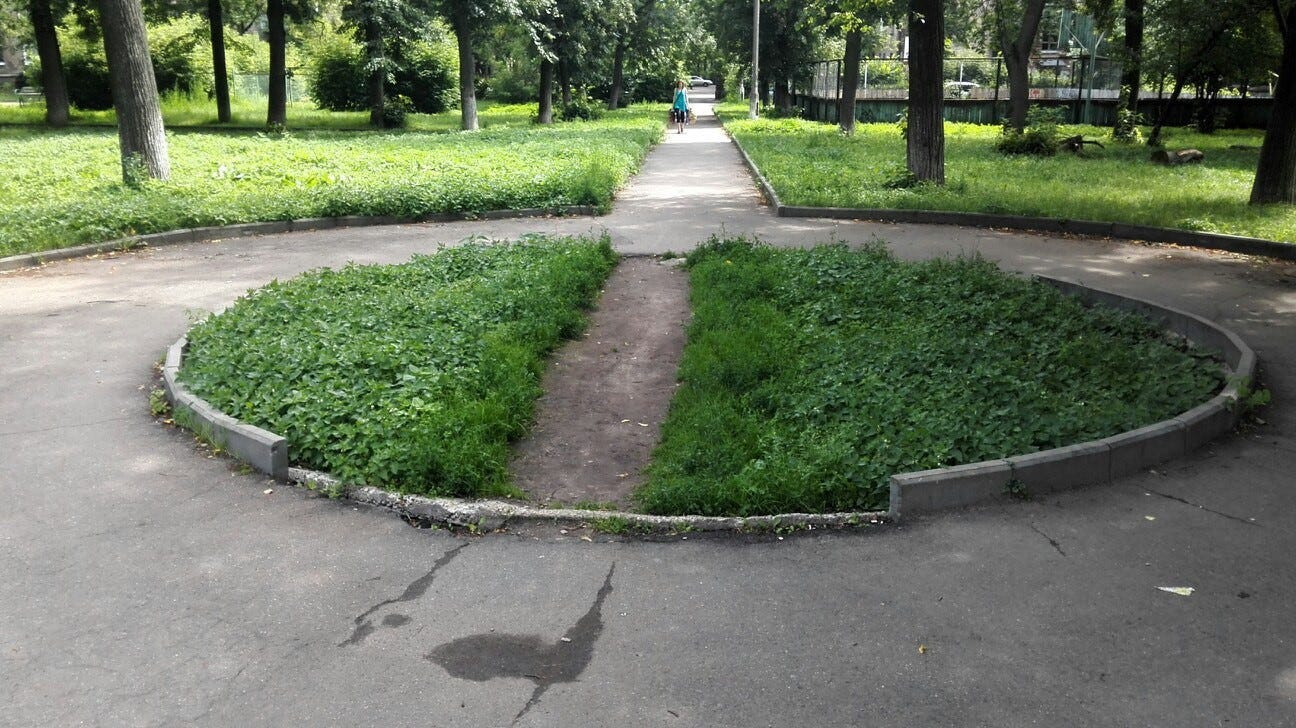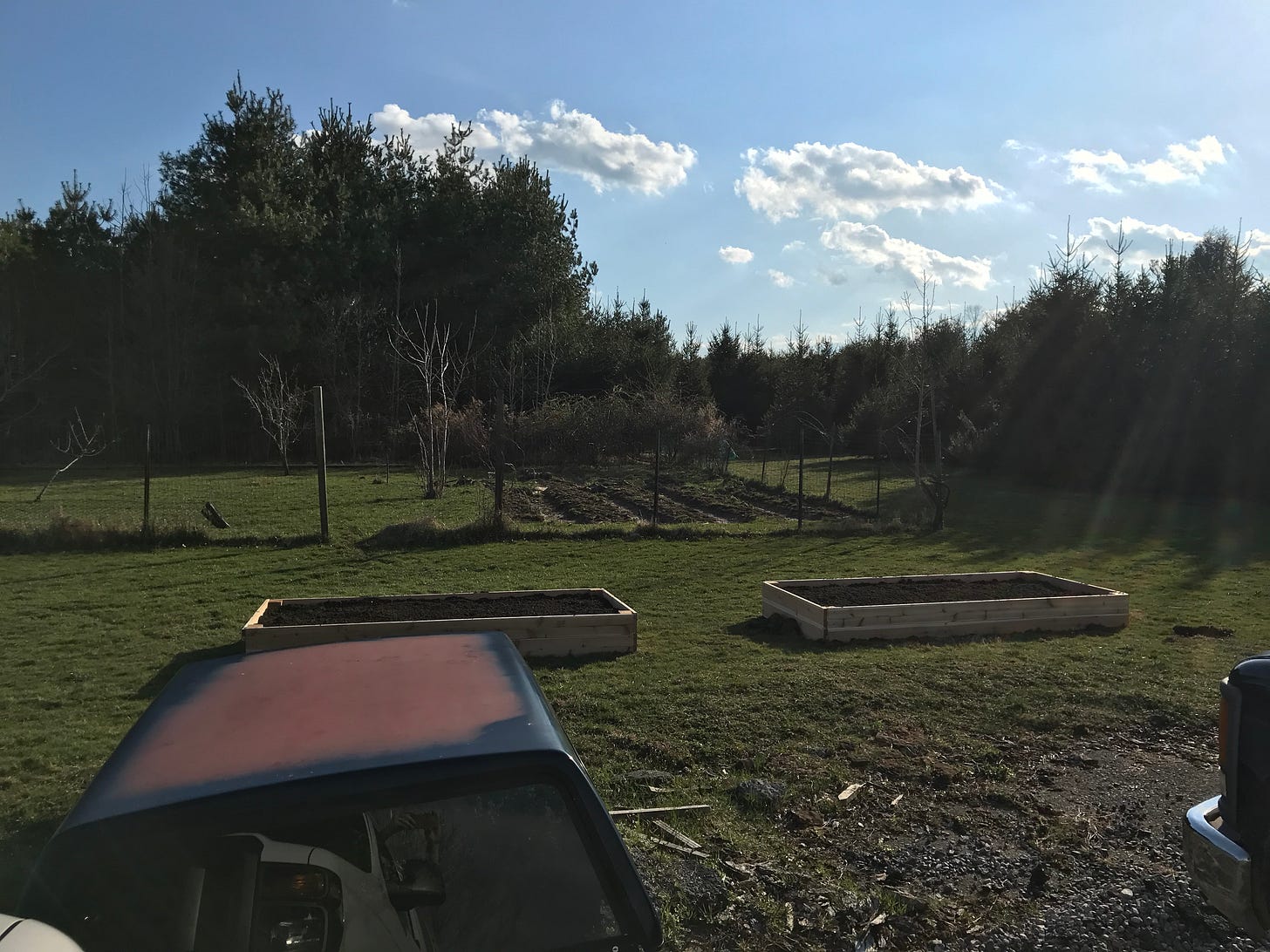Better herbs and gardens
I used to work at a farm. The farm was new, and thus there was some trial-and-error involved as we farm-hands tried to figure out the best layout and organization of the garden beds, irrigation, compost, chicken coops, etc. It was a work in progress. The farm was attached to the seminary I attended, so to translate what I just said into institutional speak: we were ideating and implementing pilot solutions to emergent concerns in a collaborative, fast-paced environment.
The farm’s larger garden beds were, for the most part, healthy: the beans, greens, potatoes, tomatoes all made it to harvest in abundance. The herb garden, on the other hand, was a disaster. Try as we might, we couldn’t seem to keep the thyme, parsley, cilantro, and rosemary alive long enough for them to make it into a dish. Whether it was pests or lack of water or lack of sun, something was wrong with the herbs.
Our first impulse was to try to improve our process. We spent more time trying to correct issues as we saw them emerge — a deer fence, a stricter regimen of watering and weeding, etc. Unfortunately, that extra work did little to solve the problem of meagre herb harvests. Adjusting our process wasn’t enough.
So we tried a broader approach: what was occurring in the patterns of the whole farm such that this was our consistent outcome? What other inputs or outputs in this system were limiting the growth of the herbs? Was there a design problem that was amounting to dead herbs? This was a trickier question to answer! Based on our experience over the previous season, we noticed a few things:
The herb garden’s location was away from the main flow of the farm, in a separate and less-visited corner of a private bed.
Noticing and engaging the herbs was therefore more difficult than it needed to be — we were required to go out of our way to attend to the herbs.
And — most importantly — the garden bed was pushed up against the edge of a grove of trees, and thus limited in the amount of sunlight it received.
Towards solving those issues, we moved the herb garden. Using some cedar planks and 4x4 posts, I helped build a few new garden beds that were directly adjacent to the main flow of the farm’s traffic, and we replanted the herb garden there.

This solved all of our problems! In fact, the herb bounty that year was more than we knew what to do with! In our pessimism over the capacity of the farm (and us laborers) to sustain herbs, we planted way more than we really expected would survive. And BOY did they survive! I wish I had a picture of the resulting harvest, but the edges of the new garden beds were quickly overrun by the cascading bounty of herbs.
Abundance, in this case, wasn’t a matter of us working harder, but redesigning the environment. By attending to the forces that were already at work in the system, we were able to encourage greater flourishing with minimal extra effort.
Desire paths

Another related anecdote, one you’ve probably heard before: rather than blindly lay down concrete sidewalks between the academic buildings and dorms, universities have learned to observe student walking patterns and simply pave over them. “Desire paths,” as they’re termed, reflect the common upwelling of inhabitant behavior in a space. Adapting to desire paths (rather than ignoring or resisting them) is a fundamental element of ecologically sensitive design, a necessary component of building a place that resonates and thrums with balanced and healthy activity.
Moving where you’re planted
Where do you notice desire paths forming in your life? Or, alternatively, where do you notice garden beds full of dead herbs?
Discovering, mapping, and understanding these patterns is fundamental to a successful home search process. Buying a home is a platform-level decision that affects every part of your life — whether you understand it or not! Much like how the location of the herb bed affected the health of the herbs, your environment will shape what parts of your life grow or wither.
So I invite — and even urge — you take the time to examine that reality and plan accordingly! Your life is an interlocking system of behaviors and designs braided together, reinforcing and sustaining each other — for better or for worse. The real estate world generally treats choosing a home in a similar way to how you’d buy any other commodity, like a car or a piece of furniture. But they’re NOT the same! Choosing a home is a choice of your environment, where your herb bed will be planted.
Leaving one environment and entering another — the home search process — is the perfect opportunity to examine your behaviors-designs braid, your environmental system, and make adjustments. But even if you choose not to engage this process of evaluation and re-design, that doesn’t make your environment any less powerful in shaping what grows (or dies) in your life. Even if you ignore it, your environment is powerfully bending and directing the flows and patterns of your life.
If you’re preparing to move — either as a buyer or a renter — then this is your chance to build the kind of change you actually want. Who can say whether your efforts will really give you what you’re after (no one can predict the future!). But what you choose now will affect the kinds of growth or decay you’ll experience soon, whether or not you attend to it. Let’s work together to pause, reflect, and plan!
This opportunity is exactly why I’m a realtor. This is the kind of conversation I get excited to have with my clients. Learning about your environment and then making necessary changes, much like looking for desire paths and then designing for them, is how I view the home search process. Is this how you’ve approached your home search process? Do you have any stories or insights to share based on your own experience? Hit up the comment section or email me, I’d love to hear!















Share this post